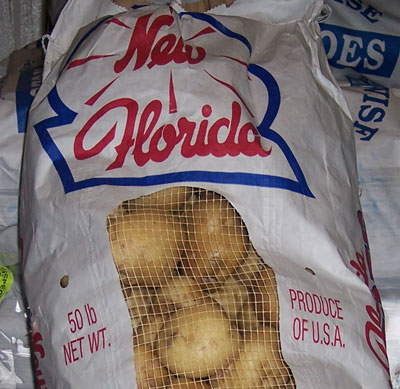Have you ever received some product, found a few containers being short weight and wondered what to do next?
The scenario I will go over here is when the container has a marked net weight. It doesn’t matter if it is listed in ounces or pounds, or in grams or kilograms, it still must meet the marked net weight. First things first, make sure your scale is calibrated. Next you need to factor in the weight of the container. The USDA method of determining the tare weight (weight of carton) is to weigh 5 empty containers, determine the average of the empty containers, and that is your tare weight. I have found only weighing 3 empty cartons is plenty, unless you find a discrepancy in the weights, then increase the number to 5 empty cartons.
The USDA policy is to weigh 36 random cartons, from top to bottom on pallets, from front to back of load. The number of containers in the lot has no bearing on the number of containers being weighed. Depending on the type of scale, you have two choices, as your scale may be set to eliminate the tare automatically, thus placing the container on the scale will give you a direct reading of the net weight of that one container. If you do not have this feature, simply place the container on your scale. This will give you the gross weight. Subtract the tare weight you determined earlier, and you now have the net weight.
Weigh all 36 containers, recording the weight for each. Most digital scales record in hundredths, and that would be fine. Add up all 36 weights, and divide by the number of containers you weighed, giving you the average, or net weight of the lot. If your 50 pound potatoes averaged 50.04 pounds, they meet net weight. If the 50 pound potatoes averaged 49.99 pounds they do not meet net weight.

If you explain to the shipper your procedures and your final net weight, chances are he/she will accept your findings. If the shipper asks for a USDA inspection, and if the USDA agrees with you, the USDA will be obligated to report the net weight misbranding to PACA. You may agree to keep the product, but PACA is going to insist the owner (which is you) mark off all reference to the net weight, on every single container. 900/50lbs bags of potatoes is not too bad, but 1600 cartons of tomatoes could be a little work. And let us not even start talking about having to open master containers to mark off the net weights on 10/5’s or 5/10’s of potatoes, or 48/1 pound bags of carrots.
As long as the average net weight is fine, is there no tolerance for the individual bags to be below the net weight?
Let’s say during your weighing of the 36 cartons, three of the bags weighed the following: 48.55 and 49.75 and 48.22, but the average net weight was 51.25 pounds. This would still meet the requirements for net weight. BUT, if a container falls below the reasonable shortage limit (the minimum weight) then it would not matter if the average net weight was met. The fact that as few as one container fell below the reasonable shortage limit would fail the requirements for net weight.
What are the reasonable shortage limits?
There is chart the USDA follows, but it is basically 4% of the net weight. In other words, a 100 pound burlap sack of potatoes could not weigh less than 96 pounds. A 50 pound sack of onions could not weigh less than 48 pounds, or a 25 pound carton of tomatoes could not fall below 24 pounds……but remember the final average always has to meet the marked net weight.

One Comment on “Net Weight”
Most of the “big buyers” will kick the load if they find one package under stated weight. I wonder how many “Net Weight” inspections are done these days? I would say very few. I remember when lettuce prices dived and we would do 4 or 5 a day through the course of one week.